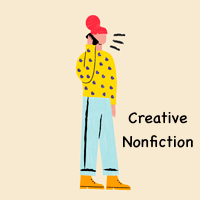My hands used to create magic. I think with the increasing demands of adulthood, they've had their spark pulled right out of them. My little sister's hands still glisten with it, but I fear he ... [+]
I struggle to believe that I can always put myself back together again. All evidence suggests that I can, because I always have, but I still have doubt. Every time a part of me breaks, it needs to be put back together differently. Every time I gather up my pieces, there are ones I don’t recognize. When I do a puzzle, I start with the edge pieces. My mother taught me this trick, and it works well. I have learned a lot about puzzles and putting myself back together from her.
1. You know you are ready to begin when your most recent puzzle gets comfortable or too easy. Comfort, while nice, can be dangerous. Spending too much time in comfort will prevent you from improving.
2. Your new puzzle should arrive in a box — contained, but chaotic. The box will not have a picture on it. Discovering what it looks like is up to you.
3. Do not allow yourself to get too overwhelmed by the number of pieces. Notice that you recognize some of them from your last puzzle. Approach them when you have a calm mind and are ready to do the work. Music helps with this; I like to shuffle all my music so that I get unexpected combinations of new and nostalgic. For example, King Princess and Badly Drawn Boy go together surprisingly well. You should listen to whatever you like, though.
4. Do not succumb to the frustration you may feel. A flipped table helps no one. Now that it is out of the plastic packaging and the box, you must complete the puzzle.
5. Begin by turning every piece right-side up, sorting the edges from the middles as you go. You do not need to look at them very carefully, but do observe the pieces you handle. Identifying their shapes and commonalities now will help you later.
6. You will probably find some pairs of pieces already connected, cardboard not cut through all the way. These parts were not fully broken down, and make your mission now a little easier. This is probably good karma from the puzzles you have successfully put together in the past. Feel encouraged. Treat these pairs with care so that they do not become separated.
7. The corners are the keystones. Give them their own pile.
8. Remember that there is a world outside of the puzzle. Evaluate whether to continue today or tomorrow. You must balance this with the rest of your life, but it is also in your best interest not to procrastinate. It will not solve itself, and if the chaos sits on the table for too long, you will feel increasingly ashamed and it will become much harder to continue. But you must continue.
9. Clear your workspace, pushing your sorted pieces to the sides. You will need room and time to build your foundation. Lay out your corners and find edges with similar colors. Try connection after connection until you find the right ones. Building out from your keystones is a nice way to begin and create points of reference. Eventually you will have an entire frame, and this will tell you something about what kind of puzzle this will be.
10. If you are feeling overwhelmed, proceed to sort your middle pieces by color. Looking for similar patterns is also helpful. An organized approach can help alleviate anxiety. Crying can also help alleviate anxiety, so do not be afraid to have a good cry as well.
11. If you find yourself working on putting the pieces of one particular color together and forsaking sorting the rest for now, that is okay. If you find yourself distracted by a different color before you have finished the previous one, that is okay too. Go where your instinct takes you. It will all get done eventually. It is essential to remain both dedicated and patient with yourself.
12. Go to the bathroom. Eat a proper meal. Get some sleep. The puzzle is important, but so is taking care of yourself as you are. You cannot heal if you do not work at it, you cannot work at it if you cannot think, and you cannot think if you are not taking care of your body.
13. As sections begin to grow, they need to be moved within the confines of the frame if they are not already there, so that they can continue to grow in a stable environment. Carefully, oh so carefully, lift and slide sections you have completed to the places where you think they approximately belong. Do not be afraid to be wrong — adjustment is always possible. If the sections break a little, you are allowed a moment of frustration and no more. Know that you can put it back together. You’ve done it once, and you will do it again.
14. Things should now be coming together. Your pieces should be bouncing back and forth in your eyes, sometimes looking like puzzle pieces and sometimes like parts of the image. This may feel confusing, but it will help you find new connections in unexpected places.
15. Drink water. Talk to a friend. Walking away and returning with a clearer mind is often necessary for making progress. I am unsure if there is science to back this up, but personal experience suggests that dark chocolate also helps with the mind-clearing.
16. When you’re down to the last few pieces, you have reached what seems like it should be the easiest part, but sometimes it is not. Continue fitting pieces into the holes in your image. If a piece seems to be missing, it is most likely not really missing — always check the box again, and under the table and chairs. Laying your face down flat on the carpet will give you a new perspective, which can help you see any unusual, puzzle piece-like topography that got lost in the view from above.
17. If a piece is well and truly lost, do not for a second believe that your puzzle is doomed to be incomplete. Remember that you have the power to make the piece yourself, in whatever way you like. Your puzzle will be whole because you will make it so. You need cardboard from a box, scissors, white paper, and pencils. Trace the gap in your puzzle onto the cardboard, cut it out, and color it to match or complement the surrounding image in whatever way feels best to you. If the piece looks out of place, you can repeat this process to replace other pieces around the puzzle too — in fact, this is encouraged.
18. Enjoy the finished image. Acknowledge your accomplishment; once again, you have created a new whole out of fragments. Feel empowered.
19. If you decide to frame it, pick your frame with care, but do not overthink. While your presentation is important, the most important thing is that it simply feels right to you.
20. Rest. You deserve a little break.
21. As soon as any part of your puzzle begins to feel comfortable: repeat.



